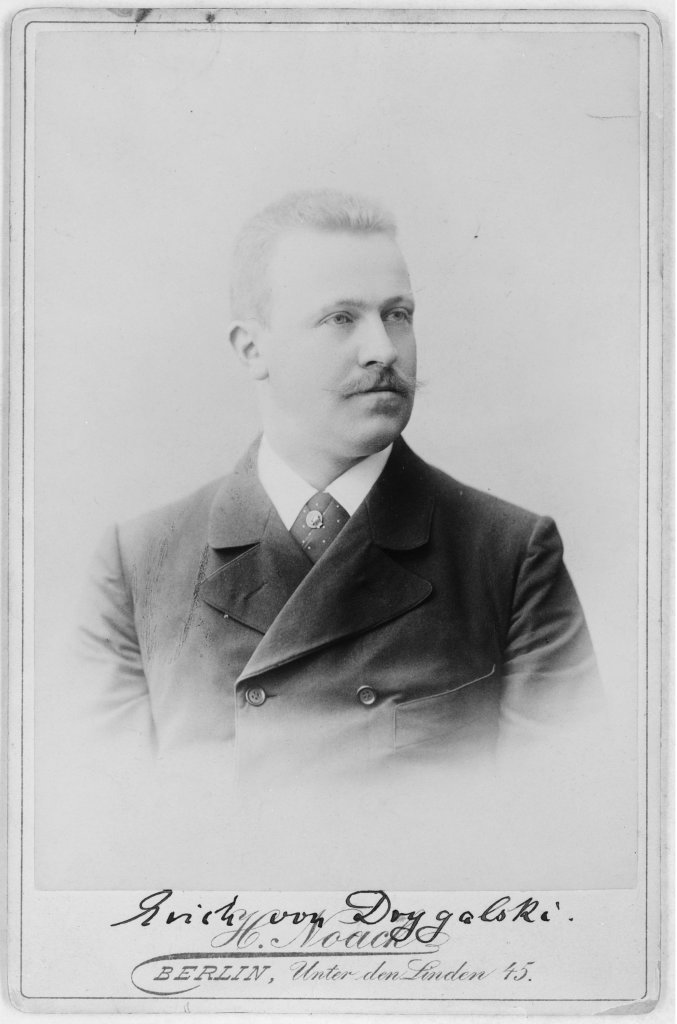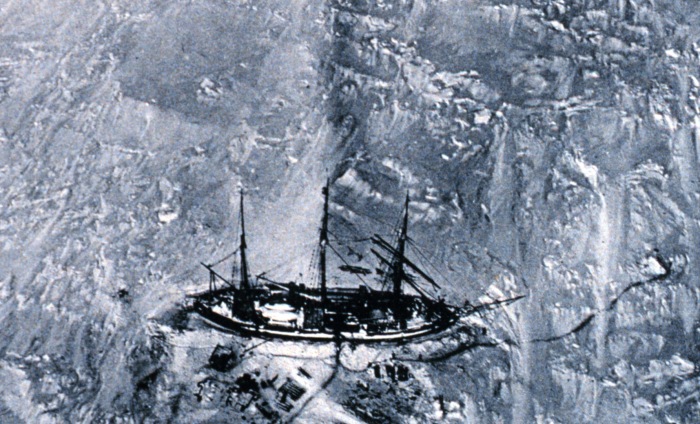
Erich von Drygalski (1865-1949)
On February 9, 1865, German geographer, geophysicist and polar scientist Erich Dagobert von Drygalski was born. Drygalski discovered a volcano, free of ice, on the Antarctic continent. He named it Gaussberg, after the name of his research ship Gauss in which he led the German South Polar Expedition (1901-03).
Background Erich von Drygalski
Erich von Drygalski was born in Köningsberg, East Prussia. At age 17, Drygalski began to study mathematics and natural science at the University of Königsberg, but soon went to Bonn in order to attend the lectures of Ferdinand von Richthofen, whom he followed in 1883 to Leipzig and in 1886 to Berlin. He graduated with a doctorate thesis about ice shields in Nordic areas. Between 1888 and 1891, he was an assistant at the Geodetic Institute and the Central Office of International Geodetics in Berlin. He habilitated 1889 for geography and geophysics with the collected scientific evidence. In 1898, Drygalski became associate professor and 1899 extraordinary professor for geography and geophysics in Berlin.
Antarctic fever
Near the end of the nineteenth century ‘Antarctic fever’ broke out in western Europe and the summer of 1891 and in 1892–1893 Drygalsky led the preliminary and main expeditions of the Berlin Geographical Society to western Greenland. One expedition wintered during the winter between 1892 and 1893 in Western Greenland. This expedition established Drygalski’s international reputation. In 1898 the German South Polar Commission suggested a national expedition to Antarctica, which was tirelessly advocated and supported by Georg von Neumayer. As Professor of Geography and Geophysics at the University of Berlin, Drygalski was subsequently chosen to be the leader of the expedition. Financing was not an issue but the Commission felt one ship would be all that was necessary so Drygalski asked for and received permission to build a new vessel – The Gauss – rather than modify an existing ship.

The Gauss enclosed in the ice. Photo taken from a balloon, the first aerial photography in Antarctica
14 Months trapped at 66° 5′ South
On August 11, 1901, the Gauss left Kiel for the south with a crew of 32 men, among them also 5 scientists including Drygalsky. Its goal was to explore the unknown area of Antarctica lying south of the Kerguelen Islands. A small party of the expedition was also stationed on the Kerguelen Islands, where they arrived in early January 1902, while the main party proceeded further south. Gauss was carrying a balloon which allowed Drygalski to become the first man to fly over the Antarctic. Drygalski also paid a brief call to Heard Island and provided the first comprehensive scientific information on the island’s geology, flora and fauna. Despite being trapped by ice at latitude 66° 5′ for nearly fourteen months until February 1903, the expedition discovered new territory in Antarctica, the Kaiser Wilhelm II Land with the Gaussberg. A second overwintering was not possible and therefore no further advance to the south. Drygalski therefore ordered a northern course, and after returning Cape Town, South Africa, on June 9, 1903, Drygalski asked for a new expedition to the German Government, but it was denied, so the crew put heading to Germany. Emperor Wilhelm II complained that the Gauss had only reached 66° 5′, while a British expedition already proceeded up to 82° 17′. Upon arrival to Kiel on 23 November, Drygalski was found with frustration that his expedition was not sufficiently valued, although he would still feel really satisfied.[2]
25 Years to document the Expedition
In 1898 Drygalski received the silver Carl Ritter Medal and in 1904 the golden Gustav-Nachtigal-Medal of the Gesellschaft für Erdkunde zu Berlin in recognition of his achievements as leader of the 1st German Antarctic expedition. Drygalsky refused to take part in the “Race to the South Pole” and concentrated of his scientific publications. Although the expedition’s report appeared soon after its return (Zum Kontinent des Eisigen Südens, 1904[4]), the scientific conclusions were fully developed only after almost thirty years of indefatigable labor by Drygalski and his co-workers. Between 1905 and 1931, he published twenty volumes and two atlases documenting the expedition.
Later Years and Death
In 1906 he accepted a call to the newly established chair of geography at the University of Munich, which he made highly regarded and held until his retirement in 1935.[1] He also presided the Geographic Institute, founded by him, until his death. In 1910, he also took part in Count Ferdinand von Zeppelin’s expedition to Spitsbergen and participated in other expeditions to North America and northeastern Asia. In 1933, The Royal Geographical Society awarded Drygalsky with the Patron’s medal. Erich von Drygalsky died 1949 in Munich.
Art and Photography in the Heroic Age of Antarctic Exploration, Part 1, [9]
References and Further Reading:
- [1] Drygalsky, Erich von, at Complete Dictionary of Scientific Biography, 2008.
- [2] Biography of Erich von Drygalsky, at Biographies.us
- [3] Erich von Drygalsky, at SouthPole.com
- [4] Erich von Drygalsky: Zum Kontinent des eisigen Südens, Verlag Georg Reimer, Berlin 1904.
- [5] Fabian von Bellingshausen and the Discovery of Antarctica
- [6] Ernest Shackleton’s South Pole Expeditions
- [7] Robert Scott’s Last Expedition
- [8] Erich von Drygalski at Wikidata
- [9] Art and Photography in the Heroic Age of Antarctic Exploration, Part 1, National Gallery of Art @ youtube
- [10] Timeline of Explorers of Antarctica via DBpedia and Wikidata






Pingback: Whewell’s Gazette Year 2, Vol. #31 | Whewell's Ghost